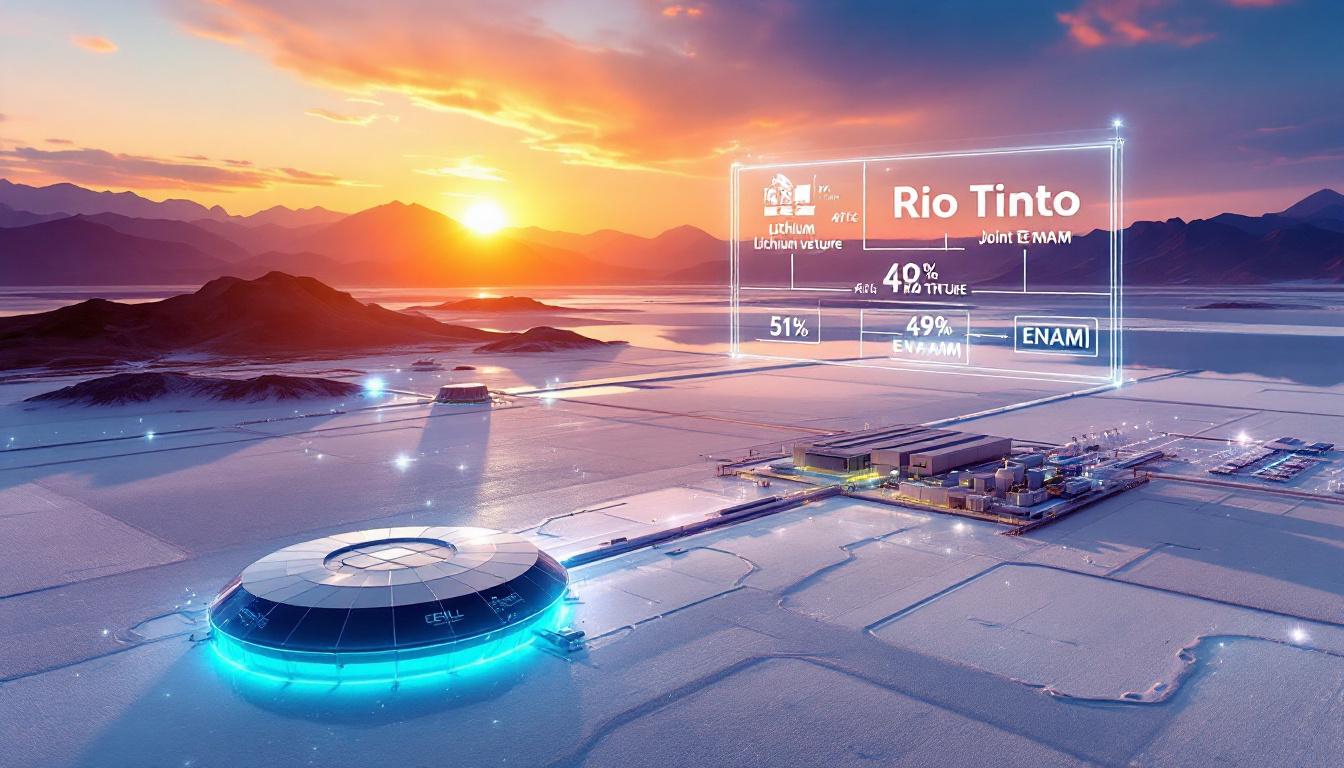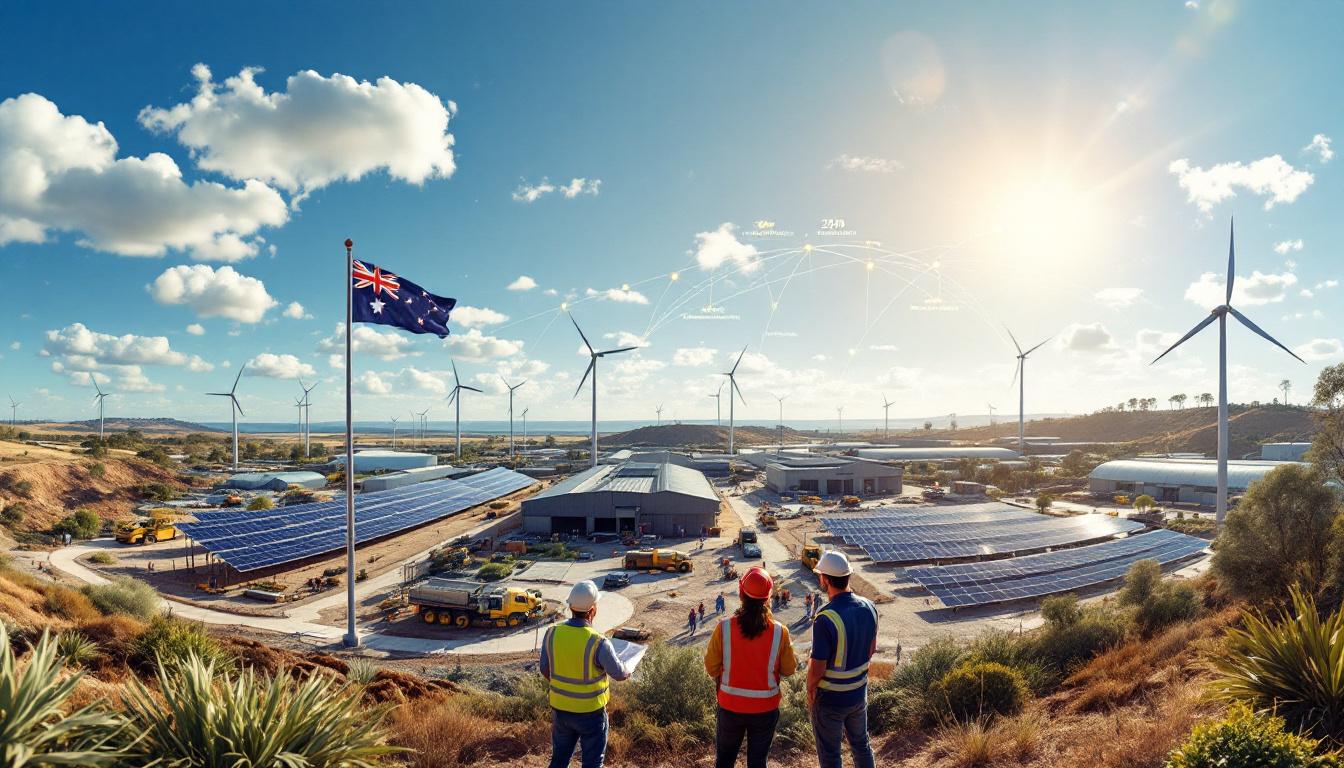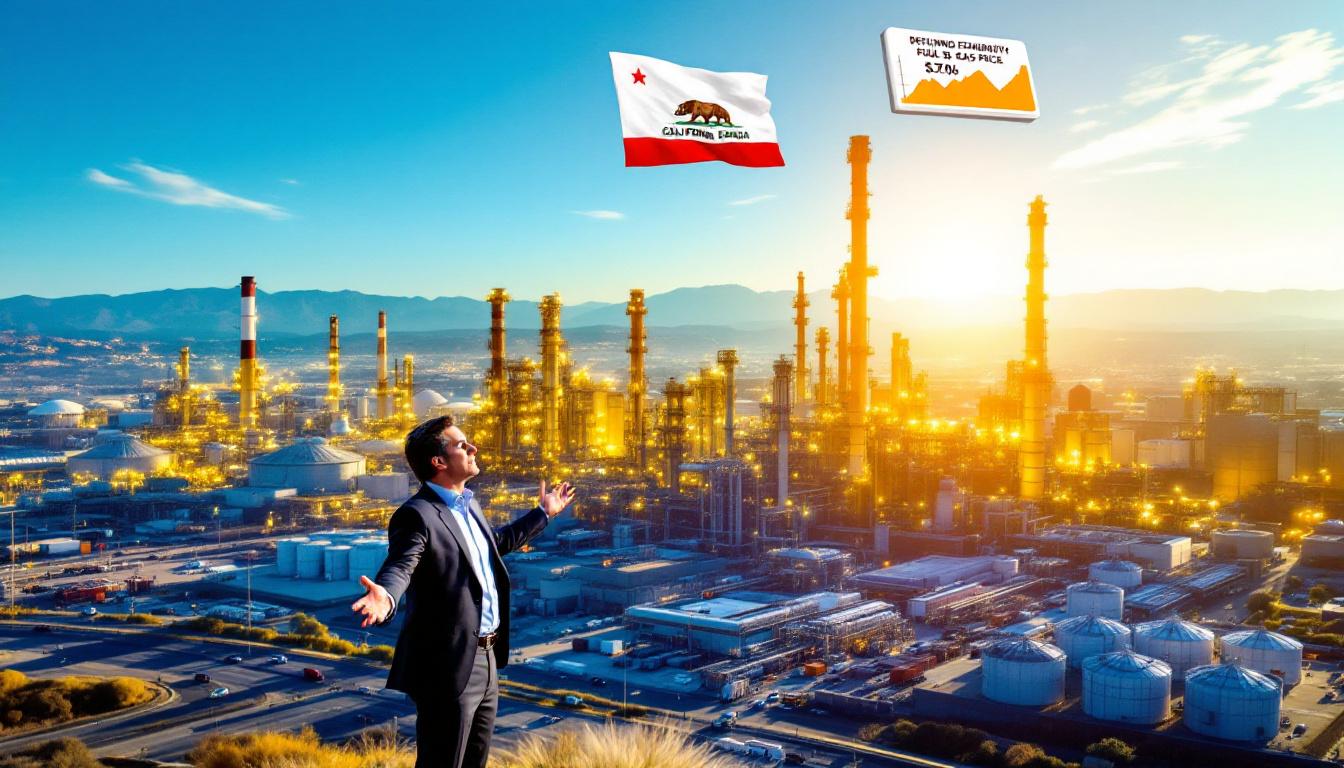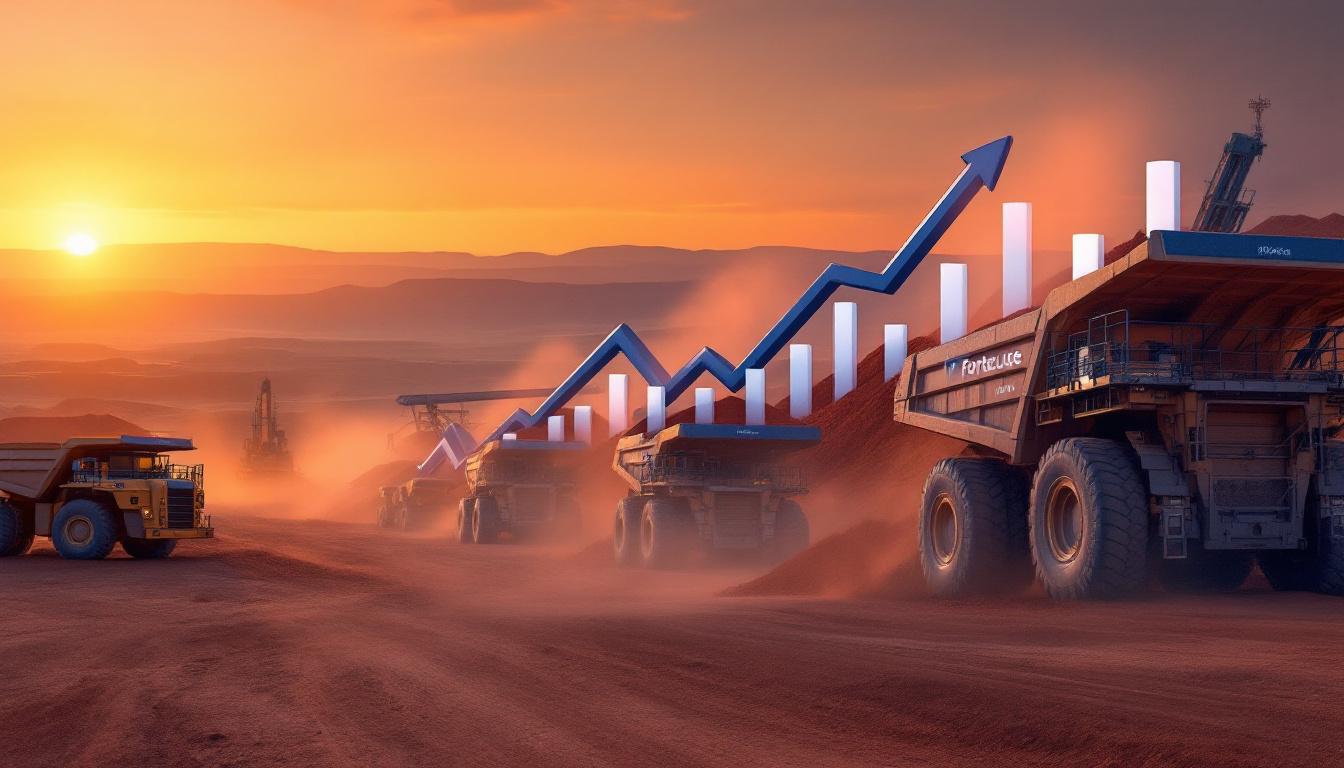How Will Simandou Change the Iron Ore Market?
The global iron ore market is witnessing a significant shift as analysts revise their previously pessimistic outlook despite Guinea's massive Simandou project nearing production. Market participants have adjusted expectations based on resilient demand patterns and supply disruptions, creating a more balanced near-term outlook while acknowledging longer-term challenges.
Current Market Dynamics Show Surprising Resilience
Iron ore price trends have maintained levels above $90 per ton in 2025, defying earlier predictions of steep declines. This resilience comes despite ongoing trade tensions between major economies that initially sparked concerns about steel demand. Analysts and traders at the Singapore International Ferrous Week conference have significantly reduced their oversupply forecasts for 2025 to 20-30 million metric tons, down from earlier predictions of 50 million tons.
Several factors have contributed to this improved outlook:
- Robust steel exports as buyers stockpile amid escalating global trade tensions
- Weather-related supply disruptions in Australia affecting major producers like Rio Tinto and BHP
- Stronger-than-expected Chinese steel production, which increased 0.4% year-on-year through April 2025
- Declining Chinese iron ore imports (down 5.5% in the first four months of 2025), helping balance the market
According to Ming Zhao, senior commodity analyst at Shanghai Metals Market, "The market has demonstrated remarkable adaptability to looming supply changes. While Simandou remains a significant factor, current price supports have proven more resilient than anticipated."
Why Analysts Are Raising Their Price Forecasts
Market experts have revised their bearish-case pricing scenarios upward, now projecting potential price floors of $80-$85 per ton versus earlier estimates of $75 or lower. This adjustment reflects growing confidence in the market's ability to absorb new supply without triggering a price collapse.
The medium-term demand outlook remains supported by China's relatively young fleet of blast furnaces. According to Professor Long Hongming from Anhui University of Technology, "There won't be any big reduction in the number of blast furnaces in China by 2035 from the perspective of the life cycle of the currently running equipment, meaning that iron ore procurement will hover at a relatively high level."
Industry insiders note that high-grade ore producers may actually benefit from Simandou's entry, as it could accelerate market segmentation based on quality. Sarah Williams, minerals strategist at Global Resources Research, explains: "Simandou's high-grade, low-impurity ore will likely establish a new benchmark for premium pricing, potentially widening the gap between high and low-grade materials rather than simply depressing all prices uniformly."
What Is the Simandou Project and Why Does It Matter?
The World's Largest Untapped High-Grade Iron Ore Deposit
Simandou represents one of the world's largest undeveloped high-grade iron ore deposits and is poised to significantly impact global supply dynamics. Key aspects of the project include:
- Location: Guinea's Simandou mountain range in West Africa
- Ownership: Joint venture between Rio Tinto and Chinese partners including China Baowu (the world's largest steelmaker)
- Production capacity: Planned 120 million tons annually at full operation
- Timeline: First shipments expected in November 2025
- Ore quality: Exceptional 65-66% Fe content with low alumina and phosphorus impurities
- Development cost: Estimated at $15-20 billion including transportation infrastructure
- Infrastructure: 670km trans-Guinean railway and deep-water port at Matakong
The project's significance extends beyond simple tonnage figures. Dr. Thomas Harrington, mining geologist and consultant for several West African projects, notes: "Simandou's ore grade is exceptional—among the highest in the world. This quality differential will reshape market dynamics, particularly as environmental regulations increasingly favor higher-grade inputs for steel production."
Supply Impact Timeline and Concerns
While Simandou is scheduled to begin shipping ore in late 2025, market participants at the Singapore conference expressed concerns about potential complications that could affect the project's ramp-up schedule:
- Political risk factors: Guinea's military government has recently demonstrated an increasingly activist stance toward mining operations
- Permit cancellations: The government recently cancelled 129 minerals exploration permits
- Regulatory uncertainty: Ongoing standoff between the government and Emirates Global Aluminium
- Infrastructure challenges: Complex terrain requiring extensive tunneling and bridge construction
- Local content requirements: New regulations mandating 30% local procurement may cause delays
Jean Baptiste Kouamé, a Guinean mining policy expert, provides context: "The current military administration views resource development through a nationalist lens. They're determined to ensure Guinea captures more value from its mineral wealth than historical arrangements have allowed, which introduces regulatory complexity and potential timeline shifts."
These factors have led some analysts to question whether Simandou will achieve its full production capacity on schedule, potentially moderating its near-term market impact.
How Will Iron Ore Prices Respond to New Supply?
Short-Term vs. Long-Term Price Outlook
The iron ore market appears to be developing a two-tiered outlook:
Short-term (2025-2026):
- Relatively balanced market with limited oversupply (20-30 million tons)
- Prices expected to remain above $90 per ton through most of 2025
- Weather disruptions and trade-related stockpiling providing price support
- Initial Simandou production having minimal immediate impact
Long-term (2027 and beyond):
- Growing supply pressure as Simandou ramps up toward full capacity
- Potential for 120 million tons of additional annual supply by late 2020s
- Price decline & surplus potentially shifting lower as market absorbs new volume
- Chinese steel industry evolution becoming increasingly important for demand
Marcus Chen, head of commodities research at Eastern Capital Markets, observes: "The market exhibits an interesting temporal dichotomy—near-term resilience coupled with longer-term structural challenges. This creates both trading opportunities and strategic positioning requirements for different market participants."
Price Support Factors vs. Downside Risks
Several factors will influence how iron ore prices respond to changing supply dynamics:
Price Support Factors:
- Continued operation of China's blast furnace fleet for at least another decade
- Production disruptions at existing mines due to weather or operational issues
- Potential delays in Simandou's ramp-up timeline due to political or infrastructure challenges
- Trade tensions potentially supporting steel export-driven demand
- Overlooked factor: Increasing ore quality requirements for green steel initiatives
Downside Risks:
- Full-scale Simandou production creating significant market oversupply
- Chinese steel production constraints due to environmental policies
- Slower global economic growth reducing steel consumption
- Increased scrap steel utilization reducing primary iron ore demand
- Hidden vulnerability: Potential for simultaneous production increases from Brazil's recovering operations
Quality Premiums and Market Segmentation
As high-grade ore from Guinea enters the market, quality differentials will likely widen. Current market dynamics already show this trend:
| Ore Type | Fe Content | Current Premium/Discount | 2027 Projected Premium/Discount |
|---|---|---|---|
| High-Grade (65%+ Fe) | 65-67% | +$15-20/ton | +$22-28/ton |
| Standard (62% Fe) | 62% | Benchmark | Benchmark |
| Low-Grade (58% Fe) | 58-60% | -$12-15/ton | -$18-25/ton |
Dr. Elena Koroleva, metallurgical engineer and consultant to several Asian steel producers, explains: "The chemical composition of Simandou ore—particularly its low alumina and phosphorus—makes it exceptionally valuable for producing high-grade steel with minimal energy input. This quality advantage will likely become more pronounced as decarbonization pressures intensify."
What Does This Mean for Iron Ore Producers and Investors?
Strategic Positioning for Different Market Participants
The evolving iron ore market presents different strategic considerations for various stakeholders:
Major Producers (Rio Tinto, BHP, Vale):
- Focus on operational efficiency to maintain competitiveness at lower price points
- Strategic involvement in high-grade deposits (like Simandou) to secure market position
- Production flexibility to respond to changing market conditions
- Investment in beneficiation technology to upgrade existing ore bodies
Mid-Tier and High-Cost Producers:
- Vulnerability to price declines below $90 per ton
- Need for cost reduction strategies to improve break-even points
- Potential consolidation as market conditions tighten
- Exploration focus shifting to higher-grade deposits
Investors:
- Reassessment of iron ore equities based on revised price outlook
- Focus on producers with lowest cost positions and highest ore quality
- Attention to political risk factors affecting new supply development
- Consider exposure to logistics and transportation companies servicing new mining regions
Investment Strategies for the Transitioning Market
Alexandra Nguyen, portfolio manager at Resource Capital Partners, offers this perspective: "The coming market transition creates distinct investment phases. Near-term, companies with operational flexibility and quality advantages offer upside. Longer-term, the focus shifts to those with structural cost advantages and diversified portfolios that can weather potentially lower price environments."
Investors should consider these strategic approaches:
- Tactical positioning: Leverage short-term price strength while monitoring Simandou's development timeline
- Quality focus: Prioritize producers with high-grade deposits that command premium pricing
- Cost curve analysis: Identify producers in the lowest quartile of production costs
- Optionality value: Consider companies with development-ready projects that can respond to market opportunities
- Geographic diversification: Balance exposure across major iron ore producing regions
"The market often overlooks the significant capital allocation decisions producers make during transitional periods. Those maintaining balance sheet discipline now will have superior flexibility when market conditions potentially deteriorate post-2027." — James Harrison, Mining Equity Analyst, Western Securities
Geological and Technical Factors Shaping Simandou's Development
Unique Challenges of Guinea's Iron Ore Deposits
Simandou's development faces several geological and technical challenges that impact its timeline and cost structure:
- Topographical complexity: The deposit is located in mountainous terrain requiring extensive engineering solutions
- Metallurgical characteristics: While high-grade, some sections require specific processing approaches
- Water management: The region's seasonal rainfall patterns necessitate sophisticated drainage systems
- Remote location: Limited existing infrastructure increases development complexity
Dr. Amadou Diallo, geologist with expertise in West African mineral deposits, explains: "Simandou's ore bodies are exceptional in quality but challenging in accessibility. The combination of rugged terrain, seasonal heavy rainfall, and limited existing infrastructure creates development hurdles that don't exist in established mining regions like Australian industry advantages."
Technical Innovations Addressing Development Challenges
The project consortium has implemented several technical innovations to address these challenges:
- Advanced tunnel boring machines specially designed for the region's geological conditions
- Dust suppression systems utilizing nano-particle technology to minimize environmental impact
- Autonomous haulage systems adapted for steep gradient operation
- Energy-efficient grinding circuits to reduce operational costs and carbon footprint
These innovations may ultimately influence development approaches across the industry, potentially accelerating similar projects in challenging regions.
FAQ: Key Questions About Iron Ore and Simandou
Will Simandou cause iron ore prices to collapse?
While Simandou represents a significant addition to global supply, market analysts have moderated their expectations for price impacts. The project's gradual ramp-up, potential political complications in Guinea, and resilient demand from China's steel sector suggest prices are likely to adjust rather than collapse. Current forecasts suggest a price floor around $80-$85 per ton rather than previous expectations of sub-$75 levels.
As commodity strategist Marcus Lin notes: "Market participants are increasingly recognizing that Simandou's impact will be evolutionary rather than revolutionary. The quality characteristics of the ore may actually support premium pricing segments while putting more pressure on lower-grade producers."
How quickly will Simandou reach full production?
Simandou is scheduled to begin shipping ore in November 2025, but reaching its full production capacity of 120 million tons annually will likely take several years. Industry experts project the following ramp-up schedule:
| Period | Expected Annual Production | % of Full Capacity |
|---|---|---|
| 2025 (Nov-Dec) | 2-3 million tons | ~2% |
| 2026 | 25-35 million tons | ~25% |
| 2027 | 60-70 million tons | ~55% |
| 2028 | 90-100 million tons | ~80% |
| 2029+ | 120 million tons | 100% |
The project faces significant infrastructure development requirements and potential political complications that could affect this timeline.
How important is Chinese steel production to iron ore demand?
Chinese steel production remains the dominant factor in global iron ore demand insights, accounting for approximately 70% of seaborne trade. According to industry experts, China's relatively young fleet of blast furnaces will continue to require substantial iron ore inputs for at least another decade, with no significant reduction in blast furnace capacity expected before 2035.
Dr. Zhang Wei, industrial economist at Beijing Steel Research Institute, provides context: "While China's steel industry is evolving toward greater efficiency and scrap utilization, the transition will be measured in decades rather than years. The capital investment in existing blast furnaces creates significant inertia in the production model."
What role does ore quality play in the market outlook?
Ore quality is becoming increasingly important as steel producers face environmental pressures and efficiency requirements. Simandou's high-grade ore (65-66% Fe) will likely command premium pricing, while potentially putting pressure on producers of lower-grade material (58-60% Fe).
This quality differentiation is expected to accelerate as environmental regulations tighten globally. Steel producers increasingly value higher iron content and lower impurities (particularly phosphorus, silica, and alumina) as they work to reduce emissions and energy consumption.
Environmental and Sustainability Dimensions
Carbon Considerations in Iron Ore Production and Consumption
The iron ore market increasingly factors in environmental considerations, with several key dimensions:
- Emissions intensity: Higher-grade ores require less energy for processing, reducing carbon footprint
- Transportation emissions: Simandou's distance from Asian markets creates higher shipping emissions
- Processing technologies: New beneficiation methods aim to reduce water and energy consumption
- Regulatory pressures: Carbon border adjustment mechanisms may impact iron ore pricing and trade flows
Environmental policy expert Dr. Claire Thompson observes: "The carbon intensity of steel production is becoming a competitive factor, which translates to premium pricing for higher-grade ores. Simandou's quality advantage partially offsets its transportation distance disadvantage from an emissions perspective."
Sustainability Initiatives Across the Supply Chain
Major iron ore producers are implementing sustainability initiatives that may influence competitive positioning:
- Water management: Closed-loop systems reducing freshwater consumption
- Renewable energy: Solar and wind installations powering mining operations
- Rehabilitation practices: Progressive restoration of mined areas
- Community engagement: Enhanced local benefit-sharing models
These initiatives are increasingly factored into investment decisions and customer preferences, potentially creating competitive advantages for companies with strong sustainability credentials.
Conclusion: Balanced Outlook with Long-Term Supply Challenges
The iron ore market in 2025 presents a more balanced picture than previously anticipated, with resilient demand and supply disruptions offsetting concerns about oversupply. While Simandou's development represents a significant long-term addition to global iron ore supply, its impact will likely be gradual rather than immediate.
Market participants should prepare for continued price volatility but with a higher floor than previously expected. The $80-$85 per ton range now represents analysts' bearish case rather than the $75 or lower projected earlier in the year.
For investors and industry stakeholders, the key factors to monitor include:
- Simandou's development timeline and political situation in Guinea
- Chinese steel production trends and blast furnace utilization
- Weather and operational disruptions at existing mining operations
- Global trade tensions affecting steel export markets
- Quality differentials between high-grade and standard/low-grade products
While the long-term supply outlook remains challenging due to Simandou's eventual full-scale production, the market appears better positioned to absorb this new supply than previously thought, supporting a more constructive medium-term outlook for 2025 price forecast insights.
Disclaimer: This analysis contains forward-looking statements about commodity markets and project developments. Actual outcomes may differ significantly from projections due to various factors including political developments, technical challenges, market conditions, and regulatory changes. Investors should conduct their own due diligence before making investment decisions.
Looking for Investment Opportunities in Iron Ore Amidst Market Changes?
Discovery Alert's proprietary Discovery IQ model instantly notifies investors about significant ASX mineral discoveries, including iron ore plays that could benefit from the evolving market dynamics described above. Visit the Discovery Alert discoveries page to understand how major mineral discoveries can lead to substantial returns for early investors.




